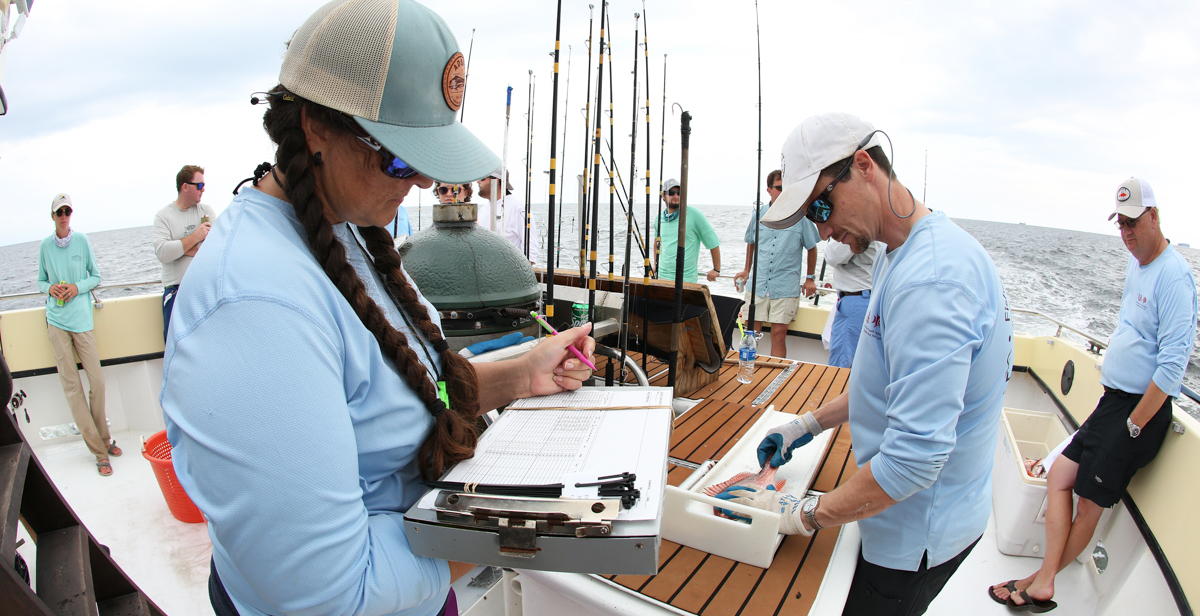5 Things to Know about Red Snapper
Posted on May 25, 2023

University of South Alabama graduate students and researchers survey red snapper south
of Dauphin Island in the summer of 2021. Dr. Sean Powers, director of the Stokes School
of Marine and Environmental Sciences, is to the far right.
Alabama's red snapper season is underway. Private and state-licensed charter vessel anglers can fish four-day weekends, Friday through Monday, until the quota of 558,200 pounds is met. Dr. Sean Powers, director of the Stokes School of Marine and Environmental Sciences at the University of South Alabama, said the season will probably close sometime around Labor Day. Here are five things to know:
- 1, 2, 3 … There are an estimated 92 million mature red snapper in the Gulf of Mexico. No need to try counting, only to be interrupted and have to start over. Researchers at the Stokes School of Marine and Environmental Sciences have pioneered new ways and technologies to estimate fish population size. In Alabama waters alone, they estimated 7.2 million snapper over 11 inches in 2022 (estimating red snapper under 11 inches has proved difficult).
- Managing resources. National Oceanic and Atmospheric Fisheries sets the snapper limit each year with a focus on fish conservation and management. Research at the University of South Alabama helps inform the science behind those decisions. About 100,000 red snapper are harvested each year in Alabama waters, Powers estimates. That’s 3-4 percent of the total population over 16 inches – the legal catch minimum size – and 10 percent of those living near artificial reefs.
- Hot real estate market. Alabama’s coastline makes up only six percent of the United States Gulf of Mexico coast, but it accounts for nearly a third of the recreational harvest – second only to the coast-stretched state of Florida. Thank high-density housing. There are more than 12,000 artificial reefs in the coastal waters off Alabama, making it the largest artificial reef zone in the world.
- Easy catch. Red snapper are tightly associated with underwater structures for the first eight years of their life. Tagging studies conducted by USA researchers and graduate students found that unless there is a tropical storm, most red snapper stay put or at most move to a neighboring reef. Because the location of many of these structures are known, finding them are pretty easy with a good depth finder.
- Old woman in the sea. The oldest red snapper found in the Gulf of Mexico was 56 years old and came from Alabama coastal waters. Like rings on a tree, a cross section through a fish’s ear stone, the otolith, reveals its age. Researchers at the Stokes School of Marine and Environmental Sciences age over 2,000 red snapper a year using advanced chemical analysis to help the state of Alabama manage the fishery. An abundance of older, pregnant females is a sign of a healthy population.
Share on Social Media





